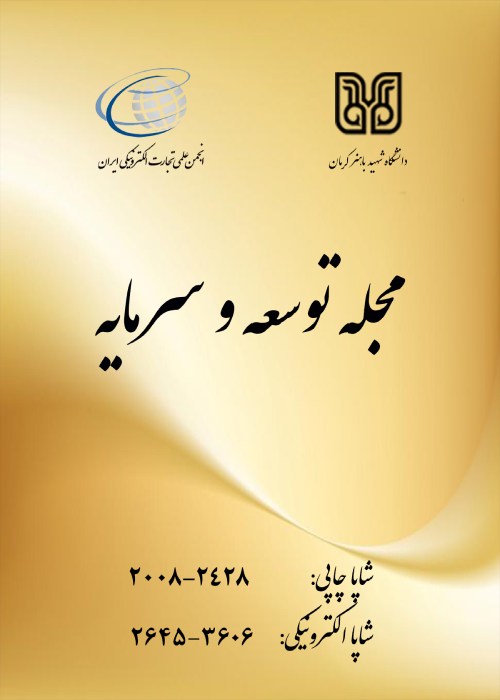Analyzing Impact of Institutional Variables on Iran’s Macroeconomic Structure (With an Emphasis on Economic Freedom Indictor)
Experience of countries with different institutional structures shows that they achieved different development goals. This phenomenon is doubly important in countries with natural resources, such as oil. There are differences in the theoretical and experimental results of the effects of the abundance of natural resources on the growth rate of a developing economy. While some oil-exporting countries have high economic growth, in others implementation of development policies has not only strengthened economic growth, but also further problems such as inadequate resource allocation, increased consumption, waste of resources, economic corruption, government budget imbalances occurred. oil revenues in high institutional quality countries controlled by the macroeconomic structure; however, in countries with low institutional quality, it destroys the macroeconomic structure, which occurs in the turmoil of important economic variables.This article seeks to investigate the two-way effect of economically significant variables and institutional variables on each other. In this regard, first, a macroeconomic model for a developing country that exports a product introduced, and then this model modified based on theoretical considerations and the main features of the Iranian economy. Given that, economic freedom is a good indicator for measuring the institutional quality of countries, it used as an alternative to institutional framework. The economic freedom index of the Fraser Institute implemented as an endogenous institutional variable in the model.
This study is based on the analysis of time series data for the period of 1972-2020 in Iran. The fact that improving income in a country may improve institutions internalizes the institutional structure, leading to measurement error, inverse causality, and false correlation, and will distort the model estimation. In such a condition, appropriate econometric methods must be implemented to eliminate these problems. One of the suitable econometric methods to reduce the problem of endogenousity of institutional indicators and correlations between institutional variables and other explanatory variables is GMM (Generalize Method of Moments), which implemented in this article. The model has seven main equations for different economic sectors and sub-indexes of Economic freedom implemented in different equations based on the compatibility with that equation.
Consumption function estimation shows that past consumption level has a large effect on current consumption, which confirms the effect of consumption function gears. The positive relationship between consumption and interest rates shows that an increase in interest rates, increases consumption, which is a result of the increasing inflation in the country. The institutional index of healthy (stable) money includes liquidity growth, freedom of ownership of foreign currencies, current inflation rate and inflation change in the last five years and has had a negative effect on consumption. in the investment equation, size of government, national income and interest rates had the greatest impact on investment, respectively. The negative exchange rate coefficient is due to the relationship between the exchange rate and investment, which can be attributed to the fact that in oil-rich countries such as Iran, the bulk of imported capital goods and rising exchange rates make capital goods more expensive and reduce investment. In the export function, foreign income has the greatest effect and a significant relationship between exports and relative prices confirmed. In this equation, the effect of the institutional variable is significant, which confirms the researcher's views. According to the results, low export price elasticity and high export revenue elasticity in Iran can be justified. Because Iran's main export is oil, which mostly influenced by the level of production and income of other countries, and due to the exogenous mechanism of determining international oil price, is not dependent on changes in the country's exchange rate.In the import equation, national income has the greatest effect, and the income elasticity of imports indicates the country's strong dependence on imported goods and the considerable volume of essential goods and services in the country's imports. The effect of oil revenue in the model is significant but its sign is contrary to expectations, as it shows that despite the decline in oil revenue, imports have increased. This evidence suggests that Iran has not been able to implement an import substitution strategy. The positive effect of the institutional variable on imports shows that with the improvement of the foreign trade freedom situation, the country's imports increase.In the production function, the institutional variable of property rights was not significant, but the institutional variable of laws and regulations had an effect on national production, which shows the direct effect of improving the status of laws and regulations and reducing bureaucracy on increasing production. The ratio of imports to capital accumulation has had a positive effect on the level of production, which confirms the results of estimating the import function based on the high share of essential goods in the country's imports.In the money demand function, an increase in national income has increased liquidity, which explains the larger monetary sector compared to the real sector. Increasing oil revenues also increase the volume of liquidity. The institutional variable of government expenditure is marked in agreement with the theory. Changes in the institutional variable of healthy (stable) money also increase the volume of liquidity. It is empheasized again that one of the components of the healthy money index is inflation in recent years, which has not been favorable in Iran and has increased liquidity. The designed institutional function is able to explain the institutional changes of the, and the sign of all coefficients agrees the expected sign. The increase in national income improves the country's institutions, while the increase in other variables such as government size, oil revenue, liquidity volume and inflation has destroyed the country's institutional situation, which government size and inflation have had the greatest impact on the institutional situation.
Estimation of institutional function also shows that increasing national income has improved the country's institutions, while increasing other variables such as government size; oil revenue; liquidity and inflation have destroyed the country's institutional situation. Meanwhile improving the quality of institutions leads to an increase in national production and reduces the volume of liquidity.
- حق عضویت دریافتی صرف حمایت از نشریات عضو و نگهداری، تکمیل و توسعه مگیران میشود.
- پرداخت حق اشتراک و دانلود مقالات اجازه بازنشر آن در سایر رسانههای چاپی و دیجیتال را به کاربر نمیدهد.




